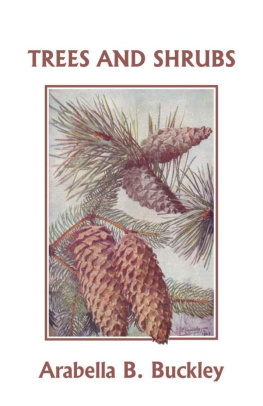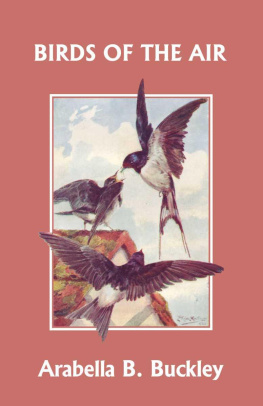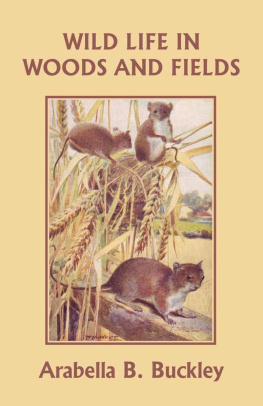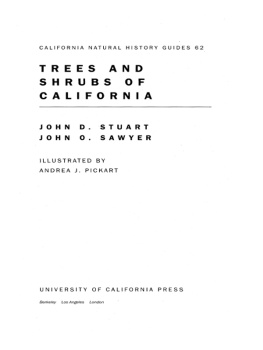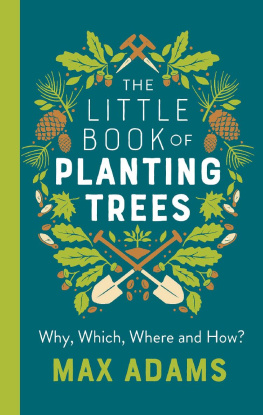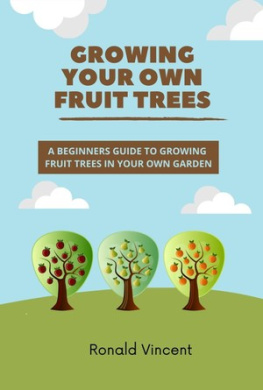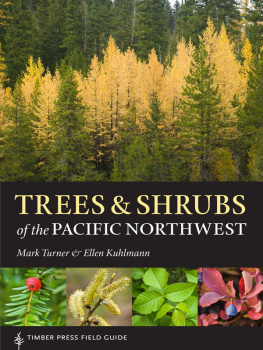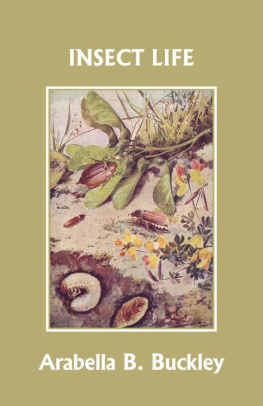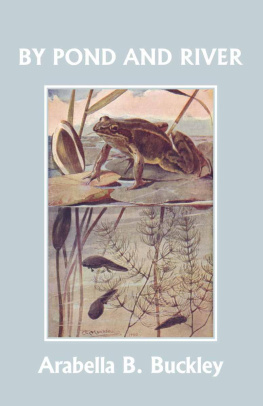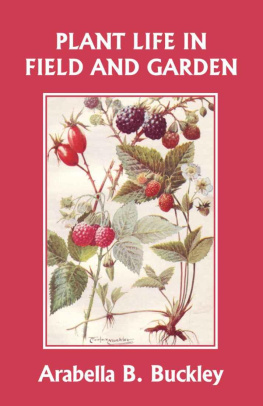Trees and Shrubs
by
Arabella B. Buckley
Yesterday's Classics
Chapel Hill, North Carolina
Cover and Arrangement 2010 Yesterday's Classics, LLC
All rights reserved. No part of this book may be reproduced or retransmitted in any form or by any means without the written permission of the publisher.
This edition, first published in 2010 by Yesterday's Classics, an imprint of Yesterday's Classics, LLC, is an unabridged republication of the work originally published by Cassell and Company, Ltd. in 1901. This title is available in a print edition (ISBN 978-1-59915-275-2).
Yesterday's Classics, LLC
PO Box 3418
Chapel Hill, NC 27515
Yesterday's Classics
Yesterday's Classics republishes classic books for children from the golden age of children's literature, the era from 1880 to 1920. Many of our titles are offered in high-quality paperback editions, with text cast in modern easy-to-read type for today's readers. The illustrations from the original volumes are included except in those few cases where the quality of the original images is too low to make their reproduction feasible. Unless specified otherwise, color illustrations in the original volumes are rendered in black and white in our print editions.
Contents
CHAPTER I
The Value of Trees
I WONDER if you have ever stopped to think how useful trees are in the world. We saw in Book III. that plants make the air pure for us to breathe. Trees, with their hundreds of leaves, do a large part of this work, and they do a great deal besides.
Let us imagine a little tree growing up in the wood, or in the field. It may perhaps be eaten away by rabbits or squirrels before it is a year old. If so, it has been useful as food. But if it grows up, it begins even the first year to drop some leaves in the autumn, and these help to make leaf-mould, and so give food for other plants.
So it goes on each year, making leaves, purifying the air, and producing leaf-mould. But very soon insects begin to make their home in the young sapling, for every kind of tree has some insects living on it. A moth comes and lays her eggs under the leaves, and the caterpillars feed on them when they are hatched. A beetle comes and lays her eggs in the bark, and the grub feeds there, till it turns into a beetle, or till the woodpecker or the nuthatch find and eat it.
In this way every tree is quite a little colony of living creatures. Then the birds come and sleep in its boughs at night and build their nests there in the spring. If the trees are elms the rooks often choose them for their rookery. If they are firs in a wood the woodpigeon will sleep there, or pheasants and hawks perch on their branches, while the thrush and the blackbird spend the night in laurels, or hollies and other evergreen trees.
When the tree has grown big it bears flowers and fruits. These fruits, or the seeds in them, serve as food for many creatures. The birds feed on the berries, the nuts, and the acorns. The squirrel makes its home in the beech-trees, and eats all kinds of nuts it can find. The field-mouse, hedgehog, and pig make good meals off the beech-nuts and acorns on the ground, while we eat the fruit of the sweet chestnut and the walnut tree, the apples, pears and cherries from the orchard.
How useful the trees are to man! They help to keep the ground moist and fresh. There is always more rain in a country where there are trees, and the ground would grow parched and dry, if it were not for their pleasant shade. How the cattle gather under them, when the sun is bright, and stand chewing the cud so peacefully out of the glare and heat! And how glad you are on your way to school, if you can walk through a shady lane instead of along the high road. Then they are so beautiful in the spring; when the fresh green leaves burst out they make us glad to think that every year tree-life begins again.
On the other hand, some trees are so old, several hundreds of years, that they remind us of times long gone by, and make us love our country when we think what a long history those trees could tell.
But even trees must die at last, and, if they are to be of use to us we must cut them down before they decay. Then, after the tree is dead, how useful it is!
Let us just go through one day of your life, and see how much of a tree you use. You get up in the morning, and the first thing to be done is to light a fire with wood. You sit on a chair: that is made of wood. You open the door that is of wood too. You take up your umbrella when you start for school: the handle was once the bough of a tree. You go upstairs to fetch your bag: the stairs are made out of planks. You set off on your way, and have to cross a brook: the bridge is made of wood. You are careful to shut the gate of the field: that, too, is made of a tree, and so is the paling round the school.
You take your place in class. Your feet rest on deal planks which come from the fir-tree. You sit on a wooden bench. Your slate has a wooden frame. Your pen has a wooden handle. The teacher puts up a wooden easel and a wooden blackboard upon it. She opens the ink-bottle to fill the inkstands, and the cork of the bottle comes from the bark of a tree, while the ink itself is made with acid which comes from a gall made by an insect on an oak-tree.
Dinner-time comes. Surely, now, you will not want any wood. You fetch your basket with your dinner in it. That may be made of wood-chips or willow twigs, and the pastry which you eat is made of paste, which your mother rolled out on a wooden board with a wooden rolling-pin.
As you come out from school you get a lift in a farm-cart, that too is made of wood, and so is the wheelbarrow you use, when you get home, for wheeling manure into the garden. You put your school things away in the old oak-chest in the corner, and when you go to bed after supper, you look up at the old beams across the ceiling and fall asleep dreaming of wood everywhere.
You could add many more things that I have forgotten; and even now we have not reckoned up the gums, the turpentine, the oils, the tannin, and the many sweet scents which we get from trees. Nor have we spoken of boats, and railway carriages, nor of the beautiful wood-carvings in our churches and other public buildings. Surely the world would get on very badly without trees!
Name any things made of wood besides those given in the lesson.
CHAPTER II
How a Tree Starts
W E saw in Book III. that some plants live much longer than others. Some live for one year only, make their seeds and die. These we call annuals . Others live two years. They grow their roots and leaves one year, and flower and make their seeds the next year. These we call biennials , because bi means two. Others live for many years, and are called perennials . Trees are perennials, for they live for very many years. There are some oak trees more than a thousand years old.
Yet all these old trees began their lives as little seedlings, like the bean you grew on the top of the earth in the flower-pot. How, then, have they managed to live so long? We shall learn this best by looking at a young seedling.
If you poke about in a wood, you will easily find some small plant, either of oak, or beech, or hazel, which has grown up from a nut, or an acorn trodden into the ground. I am going to take an oak tree, because I have one close to my door and can give you a picture of it. If you get an acorn and stick it in the neck of a bottle, the same way up as it sits in its cup, and keep the bottle full of water, you can grow a small oak for yourself, and see if yours is like mine.

